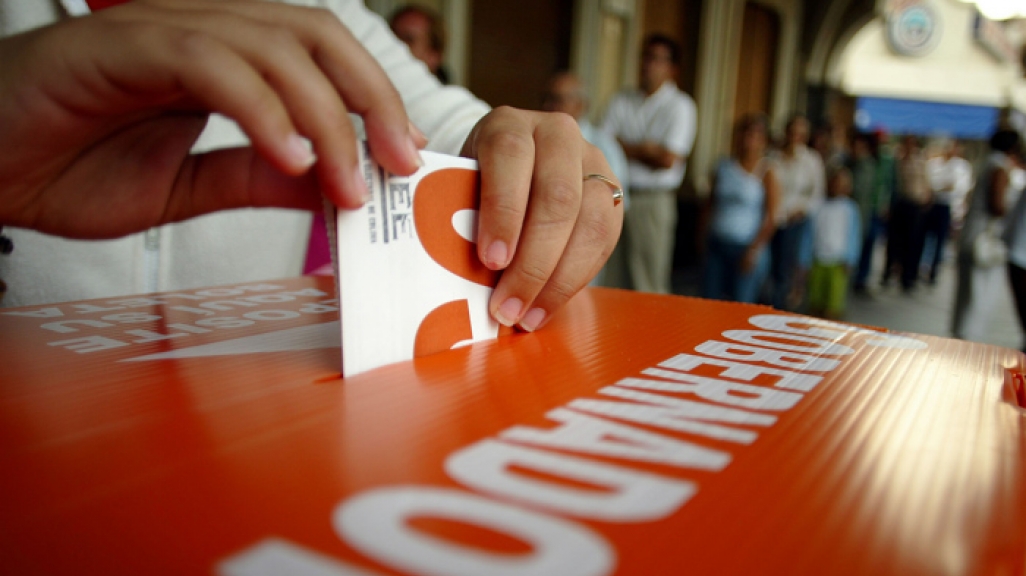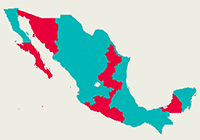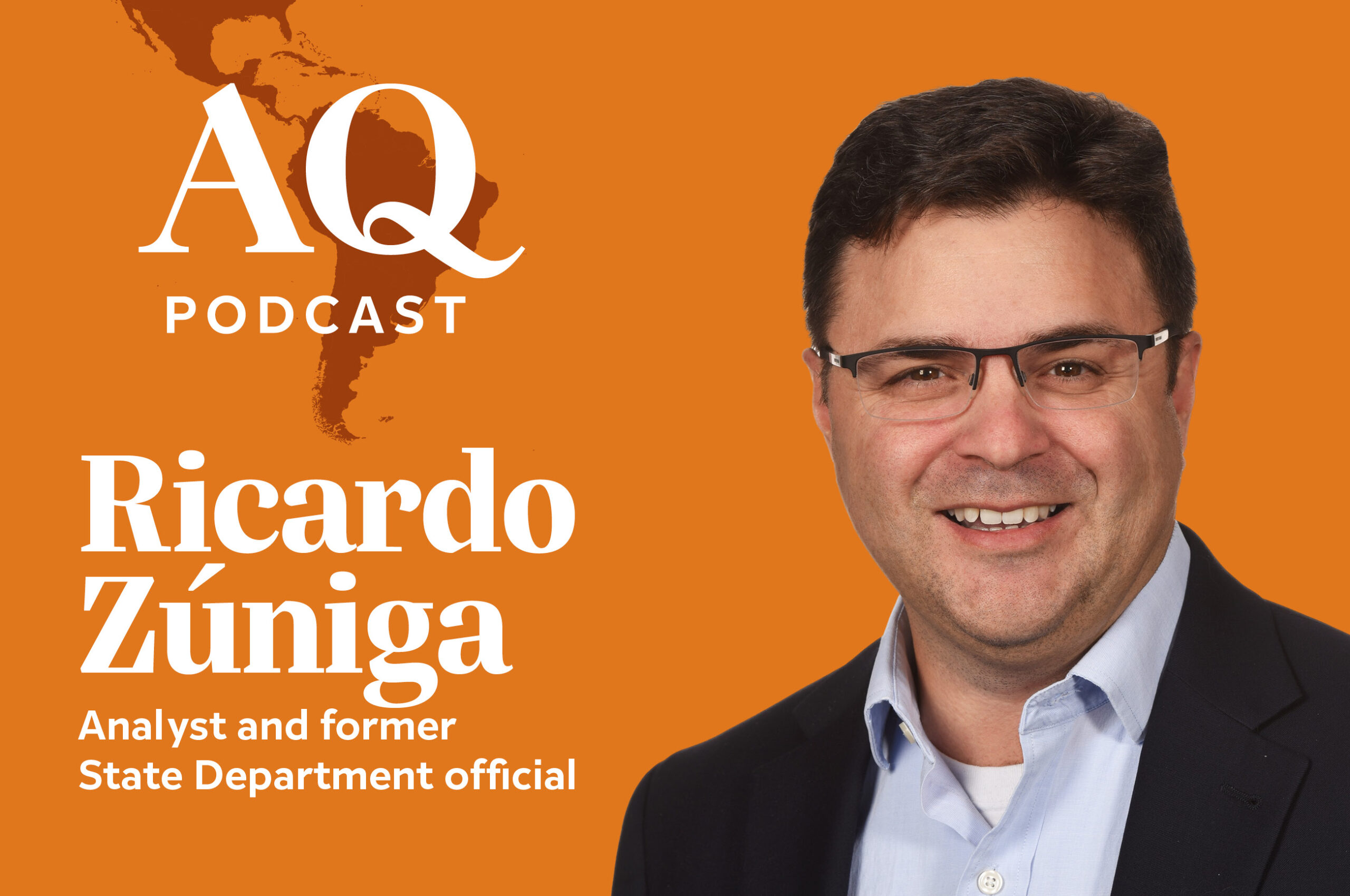Update: Get the Facts about Mexico's 2015 Midterm Elections
Update: Get the Facts about Mexico's 2015 Midterm Elections
In this challenging June 7 vote, who will win sway in the lower house and what are the key gubernatorial races?
Updated June 3, 2015 - In this challenging election round, who will win sway in the lower house and what are the key gubernatorial races? AS/COA Online takes a look at what's at stake in the June 7 midterm vote.
- How many seats are up for grabs?
- What are the main parties?
- Who has the best shot to take the lower house of Congress?
- Who’s voting—and for whom?
- What are major election challenges?
- Which gubernatorial races are the ones to watch?
How many seats are up for grabs?
All 500 seats in Mexico’s lower house of Congress, the Chamber of Deputies, are up for election to three-year terms on Sunday, June 7, as are nine governorships, 17 state legislatures, and some 300 mayoral seats across the country. In total, there are over 2,100 posts up for election across the country.
The governing party is the Institutional Revolutionary Party (PRI), which held power for over seven decades until 2000, then recaptured the presidency in 2012, when Enrique Peña Nieto took office. Mexico’s two other main parties are the right-leaning National Action Party (PAN) and the left-leaning Democratic Revolution Party (PRD). Smaller parties playing important roles are the Green Party (known by its abbreviation in Spanish, PVEM), with which PRI candidates are frequently allied, and the National Regeneration Movement, commonly known as MORENA, which is an offshoot of the PRD started during the last presidential elections in 2012 by former presidential candidate Andrés Manuel López Obrador.
Thanks to a 2012 constitutional reform, this is the first midterm election in which independent candidates can run.
Who has the best shot to take the lower house of Congress?
Who will hold sway in the Chamber of Deputies may be the election’s million-dollar question and could determine whether the governing PRI can push through reform legislation in the second half of the president’s term.
The PRI lost ground in polls last fall after uproar over the handling of the disappearance of 43 students from Ayotzinapa in Guerrero state, coupled with a housing scandal linked to Peña Nieto and members of his cabinet. The party saw support slip 10 points between August and December 2014, according to Reforma polls asking: “If the elections were today for federal deputies, which party would you support?” But by March of this year, the party was back up two points to 32 percent. Even if the figure represents less than a third of voter intention, it puts it ahead of any other party, as the chart below shows.
A Consulta Mitofsky poll from April forecasts the PRI will snatch up fewer seats than it did in the last two elections, but could capture as many as 85 seats more than the PAN, which stands as the main opposition party. The PRD—weakened by infighting—will likely lose seats, particularly to new-on-the-scene MORENA.
Meanwhile, the PRI’s alliance with the Green Party might help it offset losses; the survey projects the PRI could get a maximum of 206 seats and the PVEM a maximum of 44, adding up to half the lower house. Whether that alliance tarnishes the PRI remains to be seen; as the Guardian explained, Green Party leaders “have regularly been accused of corruption, selling political favors, and of showing no interest in environmental issues.”
No party has controlled an outright majority in the lower house on its own in the last 15 years, and how opposition parties do—or don’t—work together will affect the governing party’s mandate.
Some 83.6 million people are registered to vote, with the largest portion in the 20- to 29-year-old age range. In early May, a Parametría poll profiled supporters of political parties and found that PRI voters tend to be over 56, poorly paid, and poorly educated. PAN voters veer toward being university educated, between 26 and 35 years old, and paid one level higher than PRI voters. PRD and MORENA voters are the best paid, and PRD supporters, interestingly, tend to have either the lowest levels of education or university degrees.
What are major election challenges?
One obstacle for this electoral round may be dissatisfaction with the process and parties overall. Some 91 percent of Mexicans don’t trust political parties and 81 percent don’t trust legislators, according to a study on corruption perceptions by the Mexican Institute for Competitiveness, known by its Spanish acronym IMCO. Moreover, only 27 percent of Mexicans are satisfied with democracy.
Midterm turnout in 2003 and 2009 stood at just 42 and 45 percent, respectively, after bringing out about 60 percent of voters during the 1990s, and the expectation is that it won’t exceed 50 percent this time around. On the other hand, despite domestic debate over the use of voto nulo (submitting a blank or nullified ballot, particularly in protest), only one in 10 Mexicans would consider taking this step and most disapprove of the act, per a Parametría poll.
Another challenge for the election is security—and the ability to cast a ballot in some areas. The Dallas Morning News’ Alfredo Corchado reports that seven of Mexico’s 31 states are on high alert due to concerns about violence, with six candidates killed and 70 violent incidents during this campaign cycle so far. While a portion of the violence is linked to organized crime, some of it stems from fights between campaign workers, as vying party supporters battle over space for campaign propaganda or attack opponents’ backers.
On top of that, members of one of Mexico’s main teachers’ unions plan to hold protests and stage a boycott of the election, despite the fact that the Secretariat of Education pledged to suspend teachers’ evaluations—a cornerstone of the country’s 2013 education reform and the cause of ongoing teachers’ protests that have, at times, held the capital and other parts of Mexico hostage. Demonstrators have already destroyed thousands of ballots ahead of Election Day.
Which gubernatorial races are the ones to watch?
Almost a third of the states will elect new governors, and those states are: Baja California Sur, Campeche, Colima, Guerrero, Michoacan, Nuevo Leon, Queretero, San Luis Potosi, and Sonora. In Mexico, governors can serve one six-year term and are not eligible for reelection.
Many eyes are on the northern state of Nuevo Leon, home to the business hub of Monterrey, and where an independent candidate named Jaime Rodríguez, nicknamed “El Bronco,” is riding high on a wave of voter discontent with major parties and corruption—even though he was in the PRI for three decades. A mayor of a Monterrey suburb and two-time survivor of assassination attempts, Rodríguez is known for letting obscenities fly. “This is just how I speak, as everyone does in the north of the country...Here, we curse even when confessing to priests,” he told The New York Times, which notes that, to drum up support, the candidate has relied on social media over the usual gifts Mexican candidates distribute.
On May 21, Rodríguez got a boost when Citizen’s Movement candidate Fernando Elizondo Barragán stepped out of the race and backed El Bronco. A May 22 Reforma poll puts Rodríguez ahead with 31 percent, followed by PRI candidate Ivonne Álvarez at 26 percent and the PAN’s Felipe de Jesús Cantú at 20 percent. The victor will replace the PRI’s Rodrigo Medina de la Cruz.
Guerrero stands as another state to watch, but for more tragic reasons than in the case of Nuevo Leon. Violence has plagued this southern state—which contains tourism mecca Acapulco—in recent years, including the now infamous disappearance of 43 students from Ayotzinapa in September last year. The Ayotzinapa case led then-Governor Angel Aguirre of the PRD to step down; head of the local university Rogelio Ortega replaced him in the interim. But the state has seen violence during the campaigns as well. Last month, for example, gunmen killed the mayoral candidate for the town of Chilapa, Ulisés Fabián Quiroz, who represented the PRI and the Green Party. InSight Crime notes that the PRI may not even participate in a number of races in Guerrero, where 81 mayoralties are up for vote, due to candidates’ concern over reprisals from organized crime groups. Fabián Quiroz’s alternate opted not to run out of fear for his life.
Still, the governor’s seat is hotly contested: a May 12 Parametría poll gave the lead to PRI candidate Héctor Astudillo at 38 percent, with the PRD’s Beatriz Mojica second at 35 percent, though Parametría acknowledged that a lack of security prevented it from carrying out its survey in 17 municipalities in the state and presented difficulties in another 15. Some 71 percent of respondents believe Guerrero can handle the June 7 elections, despite calls for an electoral boycott by parents of Ayotzinapa’s disappeared students.
In the case of the Pacific Coast state of Michoacan, a May 25 El Universal poll put the PRD’s Silvano Aureoles and PRI’s José Orihuela in a dead heat at 36 percent. The PAN’s Luisa María Calderón—sister of ex-President Felipe—comes third with 22.5 percent. But the same survey found that the PRD’s and PAN’s candidates are not only better known among voters than the PRI’s, but that they’re seen more favorably as well.
Like Guerrero, Michoacan currently has an interim governor in power; last year Salvador Jara Guerrero, former rector of the state’s university, took over from the PRI’s Fausto Vallejo, who cited health reasons when he resigned—although he stepped down after photos surfaced allegedly showing his son with a drug kingpin. Also as in the case of Guerrero, Michoachan has been plagued by security issues linked to organized crime in recent years; critics blamed Vallejo for the surge in violence.
Security is an issue that threatens to cast a shadow over the state’s elections, given the death of 42 civilians and one police officer in May in what authorities are identifying as a three-hour gun battle with criminals in the town of Tanhuato, located in an area of Michoacan known for drug-trafficking. Electoral authorities identified 17 municipalities that are risky areas and where a “Plan B” will be enforced for elections in the case that armed groups take to the streets on Election Day. At least two candidates have been killed in Michoacan, including one who led a local self-defense group.










